Close

5000 B.C. - 6th century B.C.
5th - 16th centuries
16th century - 1914
1900 - 1985
1991 - 2019
History of Moldovan Wine
Ancient history
5000 B.C. – Winegrowing in Cucuteni - Trypillia culture
Vines during the Cucuteni-Trypillia culture
The presence of vines in the territory of the Republic is documented in the most ancient times, the vestiges dating from the Cenozoic (Tertiary) era (which begins about 70 million years ago) with an imprint of the vine leaf, belonging to the representative of the Vitis teutonica A.Br. species (found in the vicinity of Naslavcea village, Donduseni district) and from the Miocene era (which begins about 23 million years ago) showing vine seeds belonging to species V. aestivalis Michx. and Ampelopis (found in the vicinity of the Bursuc village, Floresti district).
Domestication and cultivation of forest (wild) vines takes place, most likely, during the Cucuteni-Trypillia culture - one of the oldest civilisations in Europe (6th - 4th millenniums B.C.), which also included the present territory of the Republic of Moldova. During this period (Middle and Late Eneolithic) the population of the area used to cultivate wheat, barley, millet, oats, peas, vetch, as well as cherry plum, plum, greenery, vines, with seeds and stones found in several settlements.
The archaeological evidence includes the presence of a trace of vine seeds (the image imprinted on a shard of pottery) dated to the middle of the fourth millennium B.C. (early the Cucuteni-Trypillia culture), found in Rusestii Noi village, Ialoveni district. The second sample refers to a trace of seeds found in Varvareuca village, Floresti district, dated to the first part of the third millennium B.C. (middle Cucuteni-Tripole culture). Both seeds correspond to cultivated vines, the first belonging to a variety with small grain, and the second to a variety with large grain.
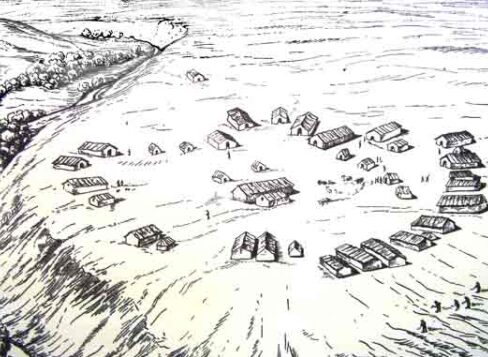

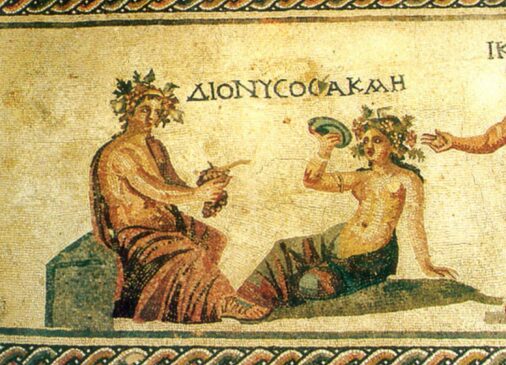
The 6th century, B.C. The Greek colonisation
Vines during the Greek colonisation of the north-western coast of the Black Sea (Pontus Euxinus) (Olbia, Tyras, Histria)
The Greek colonies, located on the entire northern shore of the Black Sea, emerged late in the 8th century and early in the 7th century B.C., initially as a transit shopping centre, and then later as producers of goods needed by the local population and for selling externally. Continuous economic contacts were established between such centres and the surrounding population: The Greeks sold to Getae luxury ceramics, various gold and silver ornaments, high quality wine and oils.
It can be assumed that at the beginning of the Greek colonisation, the local population was already cultivating vines, but the number of varieties was limited. However, the local growing conditions and the technologies used then did not ensure wines of a quality comparable to that of the Greek wines. This resulted in an increase in demand for Greek wines, which were also a component of trade at that time. Once the Greek colonists settled in the region, they brought with them a series of new vine varieties which adapted to local cultivation conditions and generated new varieties as a result of crisscrossing with the local varieties. New technological procedures for growing vines were also introduced with the arrival of the Greek colonists, such as dense plantations, short pruning, and low fruit load. Coins from the Tiras city with vine imprints, originating from the 3rd and 2nd centuries B.C., confirm the high level of development of viticulture in this region.
2nd – 3rd centuries – The Roman Dacia
The vine during the Geto-Dacian period
The Greek historian Herodotus (484-425 BC), who once lived in the Tiras settlement (later named Cetatea Alba, Akkerman and Bilhorod-Dnistrovskyi at present), was one of the first ancient historians to describe the life and customs of the Scythians, the predecessors of Geto-Dacians, who used to live on these territories. He wrote that the Scythians had plenty of wine and consumed it diluted. Thus, we can state that wine making had been an occupation of the local population for a long time.

Middle Ages
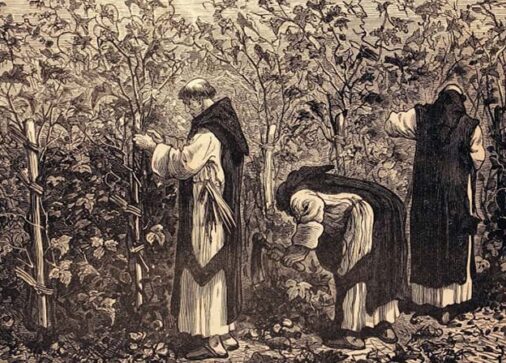
9th - 14th centuries - Christians and wine culture in monasteries
The spread (acceptance) of Christianity and the culture of winemaking in monasteries
Along with the spread of Christianity among local populations, wine has become an object of rite being used for communion. These circumstances made required that churches and monasteries produce or procure quality red wine. During the medieval period, the first vineyards appeared within places with a soil suitable for cultivation of vines, usually also comprising wineries, representing light constructions where grapes were processed to obtain wine.
15th - 16th centuries A.D. - The cultivation of vines at the noble courts during the time of Stephen the Great
The vine during the establishment of the feudal state
Starting late in the 12th century, when the new principalities, Wallachia, and Moldova, were established on the ruins of the old Dacia, winemaking began to play a more important role in the country's economy. However, it had acquired a sufficient development only towards the 14th century. The old royal documents of the Moldavian rulers of that period mention the existence of large orchards and vineyards; the collection of tithes from grape production, beehives, and wine production; they also mention the export of wines to cities in Russia and Poland. Additionally, the geographical location of the country contributed to the development of winemaking: important trade routes used to cross the country at that time (on the Danube, Prut, Dniester, and Black Sea).
By the middle of the 14th century, the most favourable areas for development of vine and wine culture started being gradually established, in terms of natural conditions and the practice of advanced traditions, ensuring that high quality wines were made for the Ruler of Moldova and the Moldovan Governors and nobility. During this period, there was an increase in production and as a result, locally produced wines were stocked accumulated in the cellars of the nobility. The entire necessary infrastructure, such as cellars and wooden barrels, was already in place in the country.
Moldova of the 15th century was famous for its abundance of agricultural products at low prices. The areas of some vineyards of that period were quite extensive. For example, in 1499 the Putna monastery owned a vineyard of 13.6 ha.
During the reign of Stephen the Great, the Hungarian varieties Hars Leveliu and Furmint were introduced in Moldova, while the latter due to long term cultivation and assimilation received the local name Grasa de Cotnari. The great feature of this wine is that it becomes nobler with each year and can age up to 17-20 years.
Among the first to gain fame were Cotnari vineyards and wines. The establishment of these vineyards is often associated with the reign of Stephen the Great, but according to researchers, winemaking has been practiced in the region since the Geto-Dacian period. In the 15th century the wines of Odobesti, Husi, Focsani and others also got famous. During the reign of Alexandru Lapusneanu, the vineyards of Iasi have developed.
Over this period (mid-14th century - mid-16th century) the local (original) assortment of vines was largely established, with a zoning (specialisation) of varieties.


15th - 16th centuries
Moldova is the main wine supplier on the Russian and Polish market
As of the 14th century the Moldovan economy has grown considerably on the basis of its agriculture. Viticulture was of great importance in agriculture. Given its strategic location, many trade routes used to cross the principality of Moldova: from Poland and Germany to Byzantium; from Hungary and Transylvania to the Russian principalities; from Wallachia to Poland. Wine was one of the most popular export goods of the principality of Moldova.
In order to strengthen the alliance with the Russian state against the Ottoman Turks, who threatened the Moldavian principality, in 1483, the ruler Stefaphen the Great (1457-1504) accepted to marry his daughter Elena Stefanova Volosanca to Ivan the Young - the eldest son of Ivan III-rd of Russia. Following this event, trade, and cultural ties with the Russian state, including the supply of wine started to be actively developed.
Moldovan winemaking suffered a decline under the 300 years of Ottoman occupation with winemaking being banned until 1812, when the Bucharest Peace Treaty was signed.
In 1596, Moldova was the main supplier of wine on the Russian and Polish markets.
18th century - The first wine classification under Dimitrie Cantemir reign
Role and contribution of Dimitrie Cantemir to the first wine classification
In the chapter "On plains and forests of Moldova", Dimitrie
Cantemir, in his work "Description of Moldova", stated that vineyards were one of the greatest treasures riches of
the land of Moldovan land. At the same time, the author made a classification of wines produced in the Country of Moldova:
The Cotnari wine is defined as "The most select" and is
believed to be "more distinguished and better than other European wines and even better than the Tokay wine".
Next were ranked, respectively, the wine from Husi, the wine from Odobesti, from Nicoresti, the wine produced in the Tecuci area, and the wines from Grecești and Costești villages of the Tutova county.
These wines were used both for the needs of the country's inhabitants, and to attract Russian, Polish, Cossack, Transylvanian, and Hungarian merchants.
Once good, vineyards in Basarabia fell into disregard under the Turkish occupation. However, in Chilia and Ismail regions wine continued to be produced for local consumption.

1900 – 98000 ha 2,2 mln Hl 70% export

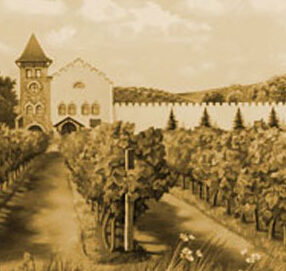
1918 - aderarea la Regatul Romaniei
Modern Age
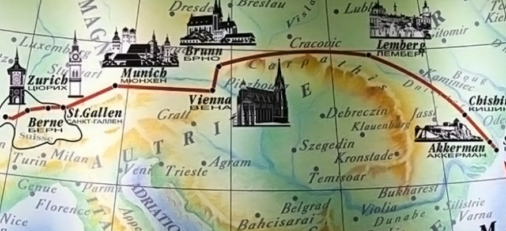
The colonists. Establishment of colonists’ communities and their contribution to vine and wine development in the region
After 1812, there is an early arrival of settlers in Basarabia, especially in the south, takes place. A number of attractive conditions were offered to colonists: each family was granted 65 ha of land and was exempt from a number of taxes, as well as a bunch of other incentives. This favoured the arrival of an influx of German, Bulgarian, Gagauz, Greek, Armenian, Swiss, and French settlers. By 1861, the settlers owned 11.8% of the total area of vineyards in Basarabia. A famous settlement was the one in Sabo village (in the proximity of near Akkerman city), made up of Swiss settlers.
While the settlement was initially intended for 120 families, soon afterwards it expanded to 900 families, who owned, together with the neighbouring peasant families, about 2,700 ha of land. The settlers brought from Switzerland metal presses and constructed cellars for wines, wells, and new houses. The settler-winemaker Karl Tardan used to carry out his activity in this community. He developed and implemented rational procedures for grape production and winemaking.
The results obtained by Karl Tardan earned awards at various agricultural exhibitions in Russia, while his book "Vine cultivation and winemaking with explanatory drawings" was (is), in fact, a small encyclopaedia of practical knowledge in winemaking. With the contribution of Karl Tardan, the first ampelographic collection was established in this region, which constitutes a basis for studies and for planting of varieties best adapted to local conditions. Karl Tardan’s activity also demonstrated that the practice of vine cultivation and winemaking could have a great economic potential.
Basarabian Winemaking College
The Basarabian Winemaking College was probably the only hub of knowledge dissemination in the viticulture and winemaking area in Basarabia. Founded in 1842 as a fruit growing school, it was transformed into the Winemaking College in 1891 and started operating in 1894. Thereorganised college set its purpose to train well qualified specialists, from a theoretical and practical viewpoint, in vine cultivation and the area of winemaking.
An experimental winemaking station was created within the college. At this station, the teachers employed by the college carried out research work. The combination of teaching activities, training and scientific practice facilitated the training of highly qualified specialists.
In 1911, the Basarabian Winemaking College was again reorganised into the Medium Tier College of Vine Cultivation and Winemaking with a training duration of 5 years. At this time, the college had a 30-hectare plot of land. On this plot the entire enterprise, the vineyards, the orchard of fruit trees and a park were displaced. In addition, the college had a model cellar with a wine collection of tens of thousands of bottles, study rooms and an oenochemistry laboratory, a library, including an experimental station with an experimental vineyard, a chemistry laboratory, and a yeast laboratory.
During its existence, the college trained hundreds of specialists in fruit growing, vine cultivation and winemaking, who worked in the winemaking area not only in Basarabia, but also in other regions of Russia.
The experimental station was the only centre for scientific research of vine cultivation and winemaking in Basarabia. An enormous achievement was accomplished in development of table wines in Basarabia (M. M. Pautansky, N. M. Kazarinov, F. I. Polizo, etc.). This work explicitly demonstrated the possibility of producing high quality table wines in Basarabia. Such wines as Aligote, Riesling, Traminer, White Muscat, Cabernet, Cabernet blends with Merlot and Saperavi (Lafit type) have gained general recognition and approval. Many of the wines created by this college had numerous times been granted high awards at national and international exhibitions. A precious collection of Basarabian wines were carefully completed from one year to another. This was a flourishing period of scientific thinking and of the creative research in the field of vine cultivation and winemaking in Basarabia.
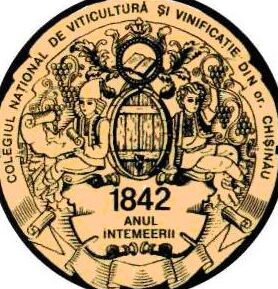
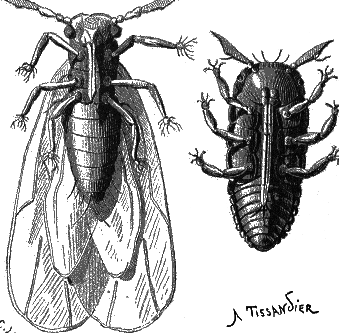
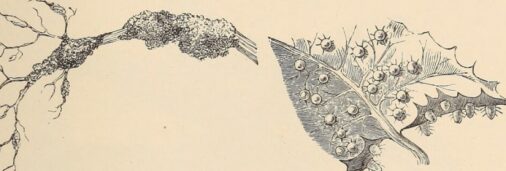
Vine in the pre-phylloxera period
After the annexation of Basarabia by Russia, the sales market expanded considerably. By 1900, the areas occupied by vineyards increased about 6 times and the volume of wine production increased approximately 15 times, out of which about 70% of wine was produced for commercial purposes. The year 1900 is considered to be the year with the highest degree of development in vine cultivation and winemaking in Basarabia: in terms of the areas with vines, it was ranked second among Russia’s main extended regions (31% of the total area of vines in Russia), and in terms of wine production it was ranked first (50% of all produced wines).
Vine during the phylloxera period
The oidium powdery mildew was among the first diseases spread in Basarabia, which was detected as early as 1855 in the lowland vineyards located between the Dniester and Prut rivers. Another pathogen of the vine, which was the grapevine downy mildew, which first appeared in the town of Leova in 1884 and then in the Orhei County in the 1886-1887 period, proved to be even more devastating. In 1888 it spread throughout the entire territory. Both diseases, especially downy mildew, were very destructive. However, effective methods of combating both diseases were soon found.
Phylloxera had a very specific nature. It was damaging the plant in a slow way, but with a much more devastating effect: plants used to slow down their growth, would decrease their productivity and finally would perish. Phylloxera, imported into Europe from North America with the American vine cuttings, was found in Basarabia in 1886 when it was brought with vine cuttings from the town of Erfurt.
The fact that the area of vineyards decreased in Basarabia by 1910 by almost twice indicates the extent of the joint impact of the phylloxera and cryptogrammic diseases on vineyards.
Two paths were possible in order to overcome the crisis: transition to grafted vine growing and to direct production of hybrids. Following these paths made the restoration and further development of vine cultivation in Basarabia possible.
1900 – 98000 ha 2,2 mln Hl 70% export


1918 - aderarea la Regatul Romaniei
Pre-Soviet period
The period prior to the USSR
The political and social events that took place at the beginning of the 20th century greatly influenced vine cultivation and winemaking in Basarabia. Not long after the vines started to recover from the invasion of phylloxera and cryptogrammic diseases, the good progress was then affected by social disturbances: The First World War, the Russian revolutions, the formation of the Democratic Republic of Moldova and the integration into a new socio-economic context after the reunification with Romania.
From the previous 5-6 million buckets of wine production per year in Basarabia, in 1918 production decreased to 3.5 million buckets, while wine maturation stopped altogether. Lack of demand, high costs to be supported for the establishment and maintenance of new plantations and lack of preferential loans for this kind of development initially slowed down the development of vines. Under these conditions, the areas planted with directly producing hybrids increased considerably, amounting to about 93% of the total area occupied by vineyards. In the early 1940s, a series of measures aimed at improving the situation and increasing the competitiveness of wines produced in Basarabia were initiated, including the grubbing up of hybrid plantations and encouraging planting of European varieties. These objectives were not fully achieved due to the outbreak of the Second World War.
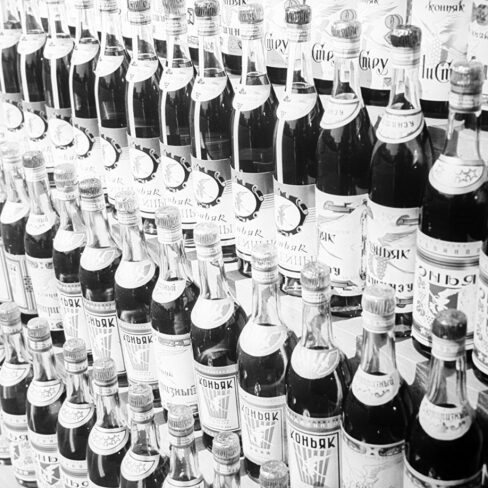
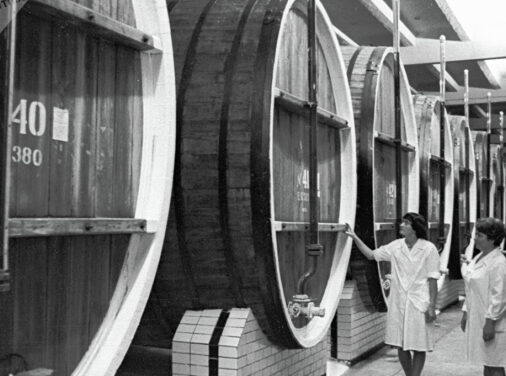
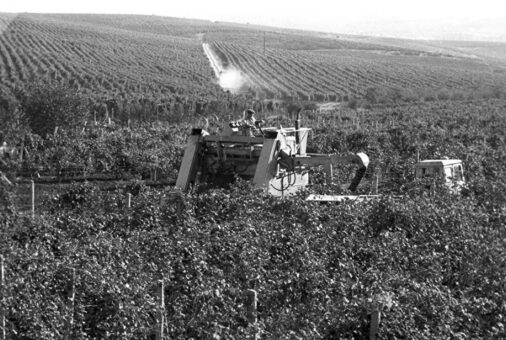
The URSS period characterised by mass vine cultivation and the largest harvest and area
According to the census of vineyards carried out in 1945, the area of vineyards was approximately 98.5 thousand ha, with an average of about 15% gaps, the existing plantations were mainly aged at 20 years and older. European varieties covered about 7% of the total vineyard area, the most numerically widely spread varieties being Aligote, Chasselas, Gamay noir, Muscat blanc, Cinsuat, Cabernet Sauvignon, Riesling, and Pinot gris, etc. Of the old local varieties, it was the Rara Neagra variety, which was mostly spread, and which covered the largest area. By 1953, following the measures of restoration and development of the wine sector, the area of vineyards increased to 106 thousand ha, 83% of which were already concentrated in the kolkhozes. In terms of assortment, the share of hybrids was still very high (about 91%). The situation began to improve after 1958 until the end of the 1990s when the areas under hybrids were practically liquidated. The recommended assortment for industrial cultivation was developed (1945, 1952, 1958 and 1964), the main areas suitable for vine were identified and the main directions of grape cultivation were determined. The orientation was taken towards increasing the areas under the varieties Aligote, Feteasca, Riesling, Rkatiteli, Traminer and others in the case of white wines and Cabernet Sauvignon, Merlot, Malbec, Saperavi, Serecezione and Gamay freaux in the case of red wines.
The increase of the vineyard areas promoted the development of winemaking enterprises, including primary processing entities, wine factories (Chisinau, Tiraspol, Balti) and specialised factory sovkhozes (“Cialac”, “Trifesti”, “Ciumai”, “Gratiesti”, “Purcari”, “Seseni” and “Romanesti”). By 1967, the volume of wine production (produced wines) increased by 22 times the 1945 level with 1.7 million bottles of sparkling wine produced and 363 thousand dals of distillates.
Early in the 1980s, the Soviet Republic of Moldova (MSSR) was ranked 6th in the world after Spain, Italy, France, Portugal, and Romania in terms of vineyard areas, global grape production and volume of wine produced.
1960 - every 4th bottle of wine in the USSR was made in Moldova.
1982 - record yield of 12 million hl from 193,000 ha of vineyards. The 6th largest producer in the world.
1985 - The beginning of the anti-alcohol campaign.
1985
Fighting alcoholism
On May 16, 1985, the Supreme Soviet of the USSR issued the Decree "On measures to eradicate drunkenness and alcoholism and production of homemade spirits", which supplemented the Decision of the Central Committee of the Communist Party of the Soviet Union "On measures to eradicate drunkenness and alcoholism" and the Decision no. 410 of the Council of Ministers of the USSR "On measures to eradicate drunkenness and alcoholism, and production of homemade spirits" of May 7, 1985.
The plan was to reduce production of alcoholic beverages, the number of production places and production duration and to punish those consuming alcohol in excess. The specificity of this campaign, compared to previous ones, of 1958 and 1972, was that production of spirits had to be reduced to a minimum by massive destruction of vineyards. Thus, from 1985 to 1987, 30% of vineyards were destroyed, more than the areas destroyed during military operations in World War II. Vineyards located in Georgia, southern Russia and Moldova were the ones that suffered the most.
The Soviet state used to annually loose almost half of its income from the food industry (a reduction from 60 to 36 billion rubbles), which further exacerbated the economic crisis of the regime.

Independence

1992
Accession of the Republic of Moldova to the OIV
In 1992, the reorganisation of the large collective entities was launched, and the farmers were expected to leave the kolkhozes and sovkhozes.
In 1992, the Republic of Moldova, the first of the post-Soviet countries, became a member state of the International Organization of Vine and Wine (OIV). Previously, it was the Soviet Union which was a member of the OIV.
1994
Adoption of the first Law on Vine and Wine
In 1994, the Parliament of the Republic of Moldova adopted the Law on Vine and Wine, which became the first law in this field among the CIS countries (in the USSR, to which the Republic of Moldova was a part, no specialized law existed). No such laws existed even in any other wine-growing countries of Europe. This law paid special attention to the wine production process, as well as other wine products with a designation of origin. In 2006, Law no. 57 of March 10, on vine and wine was adopted.
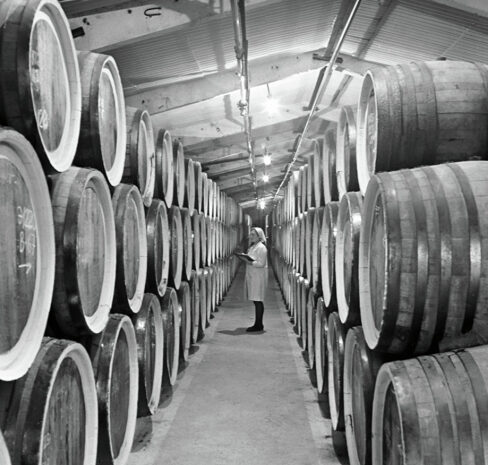
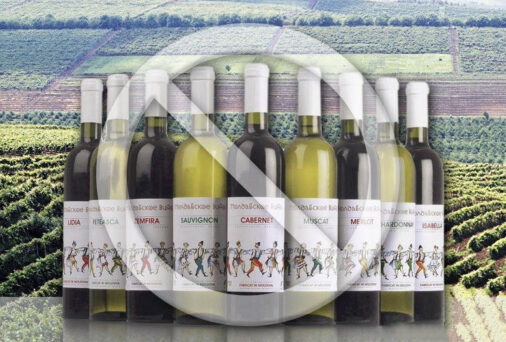
2006 and 2013
1st and 2nd Russian embargos
Prior to 2006, the Republic of Moldova was among the ten largest exporters of wine in the world. In March 2006, the Russian Federation imposed an embargo on the import of wines from the Republic of Moldova, valid for almost two years, which led to loss of access of Moldovan winemakers to the Russian wine market, representing 80% of Moldovan alcoholic beverages. Wine production decreased by about 63% compared to 2005, the exports decreased by 41%, the wine industrydecreased by 7% and the country's GDP increased by only 4%, compared to expectations of over 6%. At the same time, the wineries had suffered direct losses of about $185 million, associated with claims that would never be recovered. The same scenario, again with a political aspect, occurred in September 2013. This time, the damages were smaller given the fact that the domestic producers diversified their export routes and oriented themselves towards Belarus, Kazakhstan, Ukraine, the EU, and Asia, etc. Following the strong crises of 2006-2011, the wine sector of the Republic of the Republic of Moldova relied on production of quality wines, on market diversification and on industry modernisation.
2013 – 2014
Establishment of ONVV and the national brand “Wine of Moldova"
Establishment of the ONVV represents a decisive step taken by the public and private sector aimed at the implementation of changes to the legal and regulatory framework of the wine sector and the promotion of the country’s wine brand “Wine of Moldova. A Legend Alive”. The latter contributes to the recognition and promotion of quality Moldovan wine abroad.
ONVV is responsible for promoting Moldovan wines on foreign markets, under the umbrella of the country brand “Wine of Moldova”, whose aim is to unite all the country’s wine producers, and to facilitate the export of quality wines to the international market. The brand, also, serves as a guarantor of wine quality, subject to rigorous quality control procedures.
With a system of protected geographical indications (PGI) based on the EU model, which covers four wine areas: Valul lui Traian, Stefan Voda, Codru and Divin, the Republic of Moldova has made impressive progress in improving the quality of wines. The proof of this progress comes from the number of medals won at prestigious international competitions such as: Decanter World Wine Awards, Mundus Vini, Concours Mondial du Bruxelles, International Wine Challenge, etc.

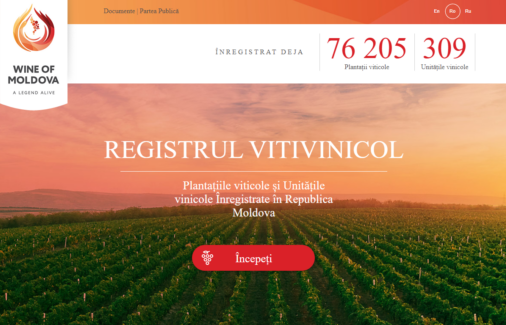
2016-2017
Wine register. Traceability.
Wine of Moldova Strategy 2030
The embargoes of 2006 and 2013, the evolution of sales markets, consumer behaviour and climate change have led to the need for a new vision for the development of the sector to 2030.
The purpose of the "Wine of Moldova 2030" Strategy is to identify the actions required to influence state policies in the wine sector and also to attract the necessary investments to give a new impulse to the sector.
International and local experts from different fields were involved in the development of the 2030 Wine of Moldova Strategy, namely experts in vine cultivation, sustainable development, winemaking, marketing and communication, education, development, and research, divin and brandy, legal frameworks and representatives of the Livada Moldovei Project who also offered financial support for the strategy development.
One of the most important steps was to develop an action plan, designed to help restructure the entire wine sector:
2014
The Association Agreement between the Republic of Moldova and the EU, the DCFTA Agreement offering Custom duty-free access to the EU market
In June 2014, the Republic of Moldova-EU Association Agreement was signed, which is based on the creation of a deep and comprehensive free trade area - DCFTA. The DCFTA agreement gave Moldovan wine products duty-free access to the EU market.
Previously, since 2007, producers used to enjoy autonomous trade preferences when supplying wine products (excluding sparkling wines) to countries of the European Union. The annual volumes of wine allowed for export were insufficient and used to create impediments to exports.
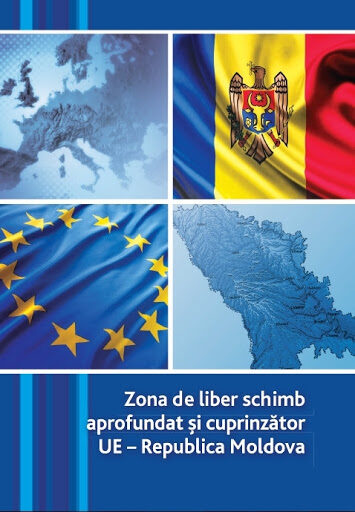
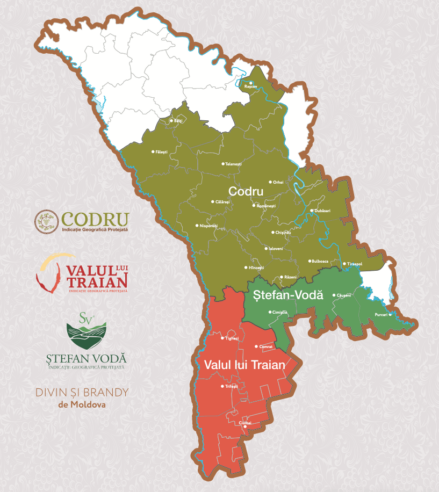
2016
PGI/PDO/TSG/AE/WoM quality signs and market structure
The Republic of Moldova has an area of 112 thousand ha of vineyards, planted with over 50 technical grape varieties. As of January 28, 2016, 3 wine-growing geographical areas designated for the production of wines with protected geographical indications were established: Valul lui Traian, Stefan-Voda and Codru.
In order to enhance the competitiveness of Moldovan wines on domestic and foreign markets, the state set the goal of modernising the wine sector and creating a favourable environment for the production of quality wines, especially, those with protected geographical indication (PGI) and protected designation of origin (PDO) wines.
About 600 thousand tons of grapes are harvested annually in the Republic of Moldova, including 100 thousand tons of table varieties, while 220-280 thousand tons of technical varieties are processed in wineries.
2020
Record number of medals obtained from Moldovan wines
Record after record! In 2020, Moldovan wines won 956 medals in 32 international competitions, the highest number of awards accumulated so far. Despite the impediments and restrictions caused by the global epidemiological situation, winemakers in the country have managed to meet the challenges and register bottled wines produced at home in the most remarkable events in the world of wine. 624 of these medals were won by local winemakers whose presence at competitions was supported by the National Office of Vine and Wine (ONVV). Of the total number of medals, most of them, ie 417 in number are gold, ranking it is followed by 277 silver medals and 169 bronze awards. In order to appreciate and recognize the quality, 65 wine companies in the country sent their samples of wines, sparkling wines and divins and received excellent grades from foreign jurors.
Moldovan wine won the most medals at the Decanter World Wine Awards (DWWA) - 124 awards, International Wine Challenge - 77 awards and Galicja Vitis - 73 awards.
Cristina Frolov, director of the National Office of Vine and Wine (ONVV): “The constant annual increase in the number of medals that our wines obtain at international competitions proves once again that we are going in the right direction and that due to the efforts country together with the National Office of Vine and Wine we produce quality appreciated worldwide. The Republic of Moldova has an enormous potential for the development of the wine sector, and the National Office of Vine and Wine, through its programs, will continue to promote Moldovan wines both locally and internationally. ”
And in 2020, the leader of the ranking remains to be the winery "Fautor" with a record number of medals, the top being completed by the winery "Purcari Winery". "Cricova", "Chateau Vartely" and "MIMI" are the wineries that continue to maintain their positions in the ranking, and "Novak Winery" "DK Intertrade" and "Gitana Winery" are the surprise appearances in this year's top.
The medals obtained at the international competitions continue the tradition of recognizing the value of quality wines from the Republic of Moldova and position our country in the list of countries with a qualitative evolution of Moldovan wines among wine products from around the world.
International appreciations are an additional incentive for local consumers to know better the product of national pride, thus contributing to the responsible consumption of quality wine.
Compared to 2019, the bottled wines produced in our country obtained 842 awards at 43 international competitions in the field. A total of 61 wineries participated in international events to assess the quality of Bachus' liqueur.
Top 20 wineries awarded at international and local competitions:
1.Fautor - 148 medals;
2.Purcari Winery - 134 medals;
3.Cricova - 45 medals;
4.Chateau Vartely - 40 medals;
5. MIMI Castle - 37 medals;
5.Novak Winery - 37 medals;
6.Bostavan - 35 medals;
7.DK Intertrade - 26 medals;
8. Vale Winery - 25 medals;
9.Gitana Winery - 24 medals;
10.Asconi - 23 medals;
11.Kazyak Vin JSC - 20 medals;
12.Suvorov Vin SRL - 19 medals;
13. Cimișlia Wineries - 18 medals;
14.Imperial Wine - 17 medals;
15.Salcuta SRL - 16 medals;
15.Timbrus Purcari Estate - 16 medals;
16.Chateau Cristi - 15 medals;
17.Aurelius - 14 medals;
17. FIFTH - 14 medals;
18.Calaras Divin - 12 medals;
19.Basavin - 11 medals;
19.Chateau Cojusna - 11 medals;
20.Tomai-Vinex - 10 medals;
Establishment of ONVV and the national brand “Wine of Moldova"
Establishment of the ONVV represents a decisive step taken by the public and private sector aimed at the implementation of changes to the legal and regulatory framework of the wine sector and the promotion of the country’s wine brand “Wine of Moldova. A Legend Alive”. The latter contributes to the recognition and promotion of quality Moldovan wine abroad.
ONVV is responsible for promoting Moldovan wines on foreign markets, under the umbrella of the country brand “Wine of Moldova”, whose aim is to unite all the country’s wine producers, and to facilitate the export of quality wines to the international market. The brand, also, serves as a guarantor of wine quality, subject to rigorous quality control procedures.
With a system of protected geographical indications (PGI) based on the EU model, which covers four wine areas: Valul lui Traian, Stefan Voda, Codru and Divin, the Republic of Moldova has made impressive progress in improving the quality of wines. The proof of this progress comes from the number of medals won at prestigious international competitions such as: Decanter World Wine Awards, Mundus Vini, Concours Mondial du Bruxelles, International Wine Challenge, etc.
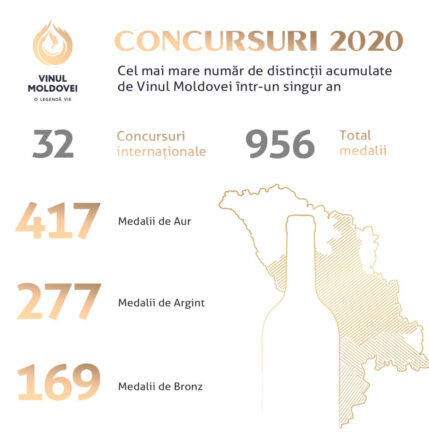
/ Follow us
/ Subscribe to news
/ Wineries / Tourism / Wine History / About ONVV / News
MD-2004, Republica Moldova, mun. Chișinău, str. Sfatul Țării, 59
office@wineofmoldova.com, tel. 022 105 560
Copyright © Oficiul Național al Viei și Vinului (ONVV). All rights reserved. Privacy Policy